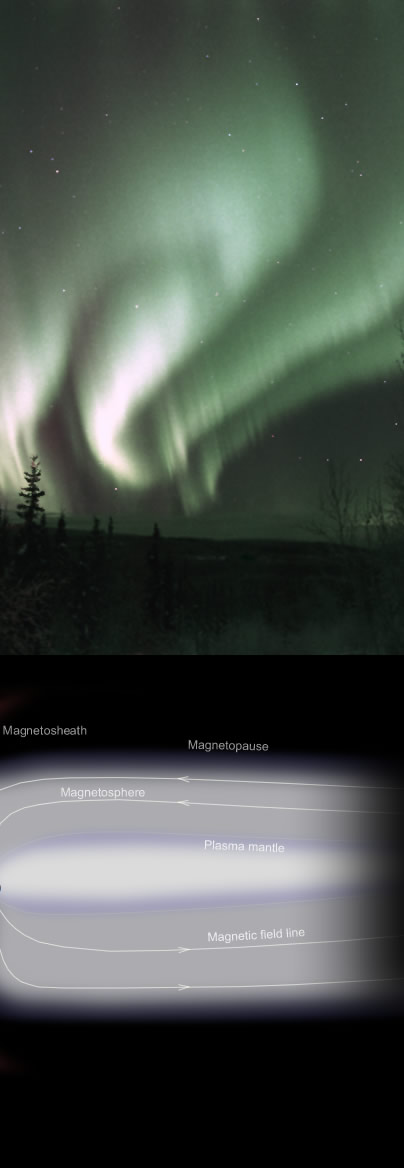Alaska Aurora imaged by Jan Curtis (Aurora site)) Fairbanks, Alaska on the evening of November 27, 2000. ©Jan Curtis, shown with permission.
The predominant green colour is the 557.7 nm wavelength light of oxygen atoms decaying from an excited state to another of lower energy (O1S -> 1D). The same electronic transition is responsible for green airglow but the way the oxygen atoms are excited is very different. The oxygen of airglow is excited by the sun's extreme ultraviolet light. Auroral oxygen is excited by collisions with high energy particles accelerated downwards into the atmosphere from the earth's night side magnetotail. The particles derive initially from the sun (in this display from powerful solar maximum X-Class flares) but, on their own, we would see few aurorae because solar protons, electrons and heavier ions reaching the earth's vicinity are ordinarily not nearly energetic enough.
Under the right magnetic and energetic conditions the solar particles enter the sunward side of earth's magnetosphere and are swept back by magnetic forces into the plasma mantle of the million km long night-side magnetotail. There they are are trapped until magnetic rearrangements accelerate some of them violently downwards.
Jan Curtis took the image two miles west of the University of Fairbanks, Alaska at 9:25PM local time with a Nikon FE camera and Nikkor f1.4 lens at 35mm, exposure 12 s @ f/2.0 onto Kodak Royal Gold 400 print film.
|






